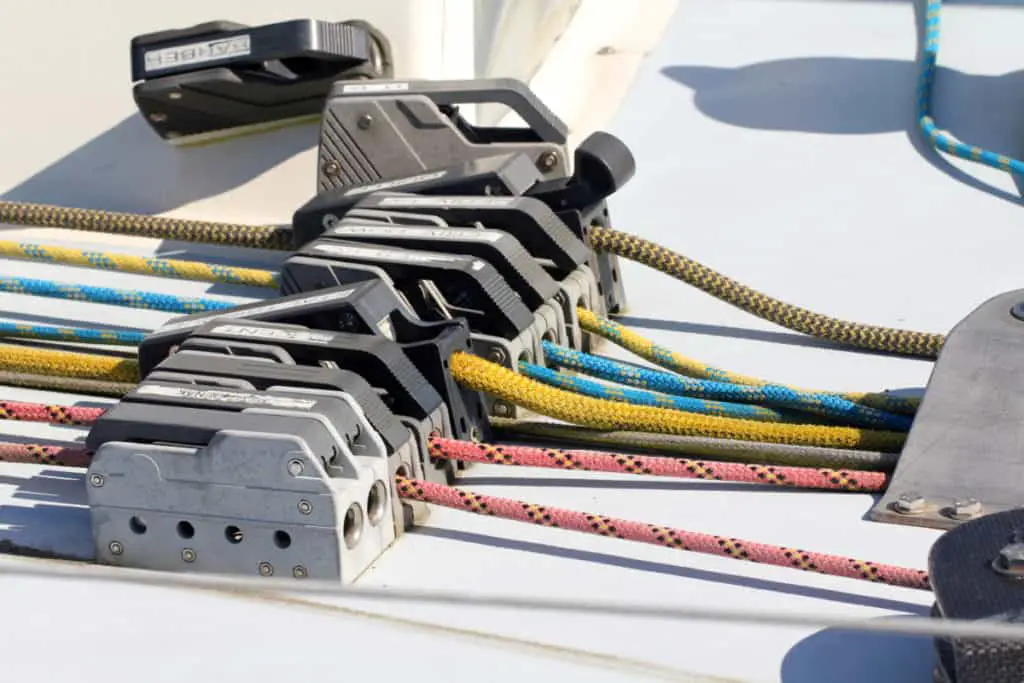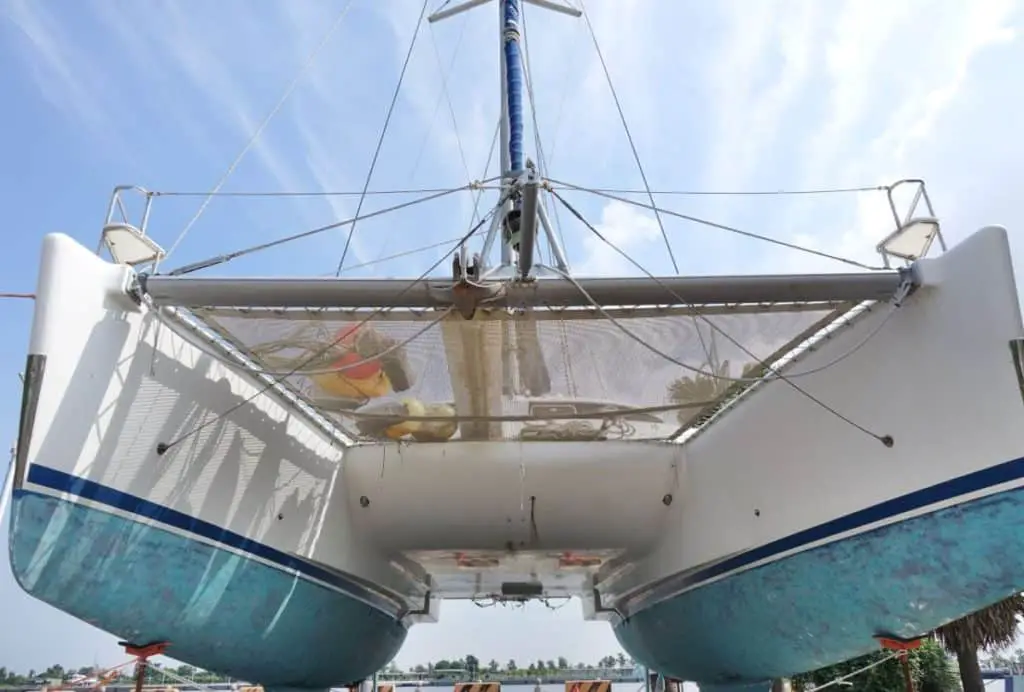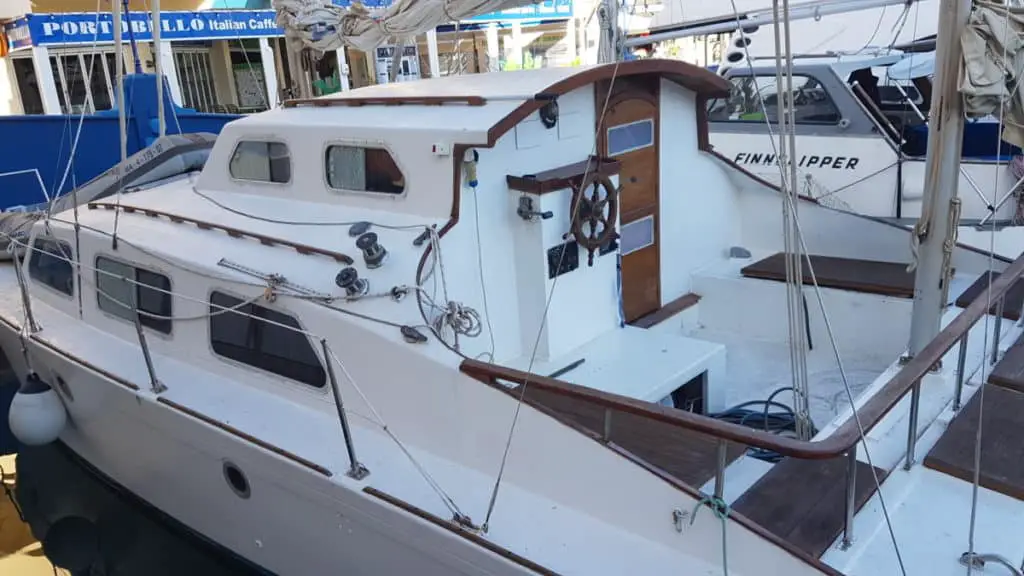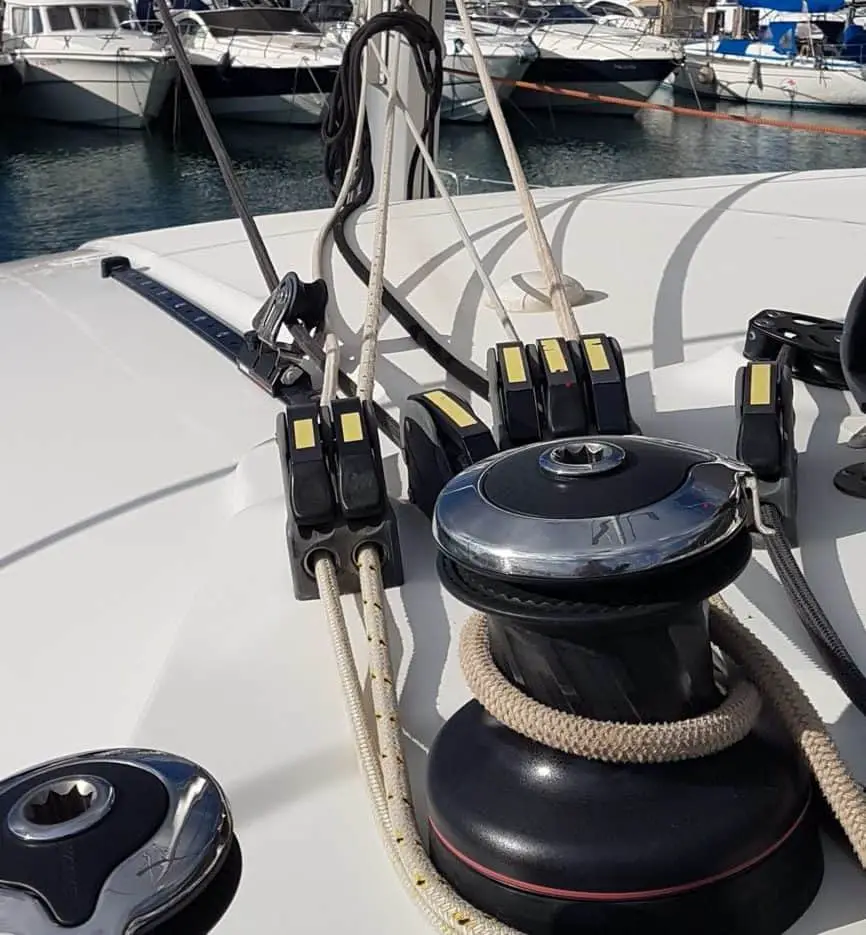As an Amazon Associate, we earn from qualifying purchases. We may also earn commissions if you purchase products from other retailers after clicking on a link from our site.
Buying a catamaran involves spending a considerable amount of money. Therefore, it’s essential to ensure that you get the most out of your investment by enjoying it for as long as you can. But how long should you expect your catamaran to last?
A well-built catamaran will last anywhere from 15 to 25 years. However, the boat’s actual lifespan depends on its type, usage levels, the quality of construction materials used, and maintenance levels. It will also depend on how well it is winterized and the kind of risks the boat gets exposed to.
In this article, you will find detailed information regarding how long an average catamaran lasts. You will also discover what factors affect your boat’s longevity, how long various components in your catamaran last, and what you can do to extend your boat’s lifespan. Now, let’s look at some of the key factors that affect the lifespan of your catamaran.
Life Expectancy of Your Catamaran’s Key Components
A solid and well-built catamaran should last a new owner between 15 and 25 years (and many times longer than that). In this time, it will need to be well-maintained and cared for. Unfortunately, this is not always possible, and many owners find that key components cause issues as the vessel ages.
Catamaran components rarely deteriorate at the same speed. Instead, different parts wear out at different rates. As such, knowing how to identify potential problem areas can help you avoid buying a catamaran whose condition is not up to standard.
To get the most out of this article, you should be comfortable with some sailing terminology. However, if you feel like you dont know what I’m talking about, I recommend you check out my Catamaran parts page, where you will find pictures and explanations of most cat parts.
Sadly, many people fail to identify the key problem areas until the issues take a turn for the worse.
So, which are these crucial areas you need to look out for?

The Mast, Rig, and Sails
On a regularly used catamaran, these parts are prone to disrepair since they contain many parts that can get messed up. Without proper maintenance, your sails could even rip and tear themselves apart. Sails are pricey to replace, but when well-treated, they should last up to 4,000 hours.
Hence, if you sail a lot, you might need to repair or replace your sails more often since they suffer assault from the sun, wind, and the sea. Additionally, always ensure to inspect them for rips, tears, and holes.
Many insurance companies and sailors estimate that rigging should last up to ten years, after which they should be replaced.

Hull Fittings
It’s important to conduct regular inspections on your hull fittings since most modern cats sport brass fittings containing zinc. With time, the zinc escapes, leaving the hull fittings more prone to damage. Also, if you have plastic fittings, prolonged exposure to sunlight could cause them to warp.
Hull fittings are one of the things that could cause the boat to fill up with water pretty quickly, make sure you have prepared a plug so that you stop water from entering the boat if it breaks.
Fiberglass Areas
These areas can deteriorate rather fast too. Fortunately, newer sailboats contain a composite core placed in between two fiberglass skins. Still, many boat owners complain that some sections of the deck or seats begin to feel somewhat spongy. This often means that delamination or rot has settled within the fiberglass’ core, a core which many times are made of wood (balsa).
However, when properly fitted and maintained, you can expect the fiberglass to last as long as 50 years. That number will begin to reduce if it is overly exposed to sunlight, salt-water, and lots of time spent on the open seas.
Centerboards and Keels
Centerboards and keels also suffer considerable wear over the years. This is because they are subject to heavy loads and their supporting parts are mainly underwater. Moreover, the type of water you sail in can also affect how long your centerboard lasts.
Its very hard to say how long they will last but usually what happens is that the deployment system gets corroded and the boards get stuck in place, same remedy as always, check and maintain!
The Engine
A cat’s engine has a significant impact on a catamaran’s lifespan as some owners will not bother to spend time and money fixing a boat without a functional motor.
A gasoline-powered engine might last 1,200 to 1,800 hours and a diesel engine 5,000 hours before requiring significant maintenance, but many owners often run their boats for a mere 50 hours per year. Still, the engines need regular upkeep after they run and before storage, just as you would with a car.

How Construction Materials Will Affect Your Catamaran’s Lifespan
Different catamaran manufacturers use varied high-quality construction materials in their boats. As such, it’s crucial to learn which materials last and which ones don’t. The type of materials commonly used in catamaran construction mainly include wood, fiberglass, and aluminum.
Fiberglass Cats Will Last Many Decades
It’s pretty easy to restore fiberglass hulls to their original luster since they only require a bit of extra care. Designed for use in salty water, fiberglass cats can also withstand rough sea conditions and ocean voyages. Fiberglass is the industry standard today.
However, the boats also get exposed to elements that might adversely affect their lifespan. As a result:
- They can have their gel coat scrape off.
- They could take damage resulting in a crack or hole which leads to water infiltration of the core material.
- The fiberglass can delaminate with time.
Repairing a fiberglass cat takes both money and skill. A well-maintained fiberglass hull will last forever (close to at least)!
Aluminum Cats Can Last Decades
These boats are light in weight; hence they float much higher in the water. And since this material is more common on smaller vessels, aluminum is the preferred option when traveling in icy waters and is built to take some beating.
Due to this reason, some aluminum cats might last longer though they also suffer dents, scratches, leaks from damaged rivets, which are all easy to fix.
Aluminum cats can last a lifetime, but they tend to change ownership after 10-15 years.
Well Used Catamarans Deteriorate Faster
A sailing catamaran generally deteriorates due to covering too many miles. The total number of hours you put on the catamaran’s sails, the hull, and other key components is what leads to long-term damage.
If you keep your boat in a marina or the harbor for an extended period, it will generally hold up well, thus requiring minimal maintenance and repair.
However, if you are an avid sailor, your boat tends to undergo a lot of strain during regular sailing, including additional stress from rough weather conditions. As a result, your maintenance costs also go up.
The crew also has an impact on the wear and tear of the boat, much like a car, depending on how hard it has been sailed and abused, the need for repairs will differ.

Proper Maintenance Will Keep Your Catamaran Sailing Longer
Catamarans contain features that predispose them to a long life. They are sturdily built with materials that are easy to repair and maintain.
Make sure you properly maintain “the four essentials” engine, sails, running rigging and standing rigging.
That said, you need to maintain proper upkeep of your catamaran if you want it to last long. Failure to do this will lead you to problems, as we shall see next.
How To Extend Your Catamaran’s Life
It’s possible to minimize the level of deterioration that occurs on your catamaran over time by following appropriate maintenance techniques as told by the manufacturer.
Other maintenance tips include:
- Wash saltwater off your sails, rigging and vital parts before storage and winterize it to prevent untimely death.
- Check your engine for leaks, damaged hoses, corrosion signs, or electrical problems.
- Always ensure that the battery and fuel lines are in good working order.
- While using the engines, keep the revs between 2000 and 3000 rpm.
Conclusion
A well-cared-for catamaran can last for generations. So, when buying a used boat, check it over carefully for any damage and see whether every component is well-maintained. After you purchase your cat, follow the helpful tips in this article to maintain your boat in tip-top condition, guaranteeing yourself many years of stress-free sailing.
